
The Enchanting Vineyards and Red Hills of Cafayate
Discover Cafayate: Argentina's Wine Paradise with Stunning Red Hills and Rich Cultural Heritage
Nestled in the heart of Argentina's wine country, Cafayate is a hidden gem that offers a perfect blend of natural beauty, rich history, and world-class wine. Known for its breathtaking landscapes, this charming town is surrounded by the dramatic red rock formations of the Calchaquí Valley and lush, sprawling vineyards. The region's unique terroir produces some of the finest Torrontés wines, a local white varietal that is both aromatic and refreshing. Beyond its vineyards, Cafayate is a gateway to exploring some of Argentina's most stunning natural wonders. The Quebrada de las Conchas, a nearby gorge, is renowned for its striking rock formations and vibrant colors. Visitors can hike, drive, or bike through this scenic route to experience its famous landmarks, such as the Amphitheater and the Devil's Throat. Cafayate's colonial architecture, charming plazas, and welcoming locals add to its allure. The town's central square, Plaza San Martín, is a great place to relax and soak in the local culture. Nearby, the Museo de la Vid y el Vino offers an insightful look into the region's winemaking heritage. Cafayate is not just a destination; it's an experience that will captivate your senses and leave lasting memories.
Local tips in Cafayate
- Visit during the grape harvest season (February to April) to experience the vibrant wine festivals.
- Don't miss out on tasting the local Torrontés wine, unique to the region.
- Bring comfortable walking shoes for exploring the town and nearby natural attractions.
- Early morning or late afternoon are the best times to visit the Quebrada de las Conchas for optimal lighting and fewer crowds.
- Stay hydrated and use sunscreen, as the region can get quite hot and sunny.
The Enchanting Vineyards and Red Hills of Cafayate
Nestled in the heart of Argentina's wine country, Cafayate is a hidden gem that offers a perfect blend of natural beauty, rich history, and world-class wine. Known for its breathtaking landscapes, this charming town is surrounded by the dramatic red rock formations of the Calchaquí Valley and lush, sprawling vineyards. The region's unique terroir produces some of the finest Torrontés wines, a local white varietal that is both aromatic and refreshing. Beyond its vineyards, Cafayate is a gateway to exploring some of Argentina's most stunning natural wonders. The Quebrada de las Conchas, a nearby gorge, is renowned for its striking rock formations and vibrant colors. Visitors can hike, drive, or bike through this scenic route to experience its famous landmarks, such as the Amphitheater and the Devil's Throat. Cafayate's colonial architecture, charming plazas, and welcoming locals add to its allure. The town's central square, Plaza San Martín, is a great place to relax and soak in the local culture. Nearby, the Museo de la Vid y el Vino offers an insightful look into the region's winemaking heritage. Cafayate is not just a destination; it's an experience that will captivate your senses and leave lasting memories.
When is the best time to go to Cafayate?
Iconic landmarks you can’t miss
Garganta del Diablo
Discover the stunning beauty of Garganta del Diablo in Salta, Argentina, a natural wonder that enchants visitors with its breathtaking landscapes.
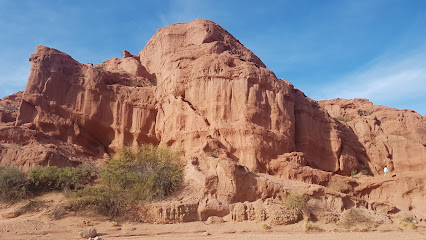
Cafayate Square
Discover the charming Cafayate Square, a vibrant park in Argentina's Salta Province, where relaxation meets local culture and breathtaking landscapes.
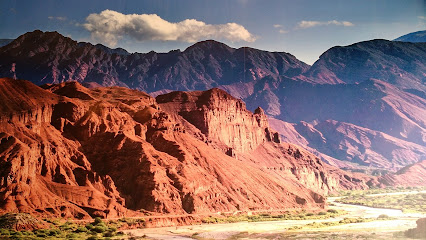
Piattelli Vineyards
Explore the beauty of Piattelli Vineyards in Cafayate, where exceptional wines and stunning landscapes create an unforgettable experience in Salta Province.
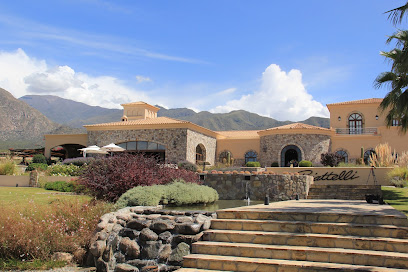
Patios de Cafayate
Experience luxury and breathtaking views at Patios de Cafayate, a top hotel in Argentina's stunning wine country of Salta.

La Casa de las Empanadas
Experience authentic Argentinian flavors at La Casa de las Empanadas in Cafayate, a delightful culinary stop for every traveler.
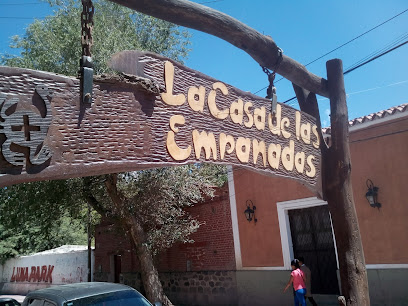
Cafayate Goats S.A.
Discover the authentic taste of Cafayate with artisanal cheeses at Cafayate Goats S.A., surrounded by stunning landscapes in Salta Province.
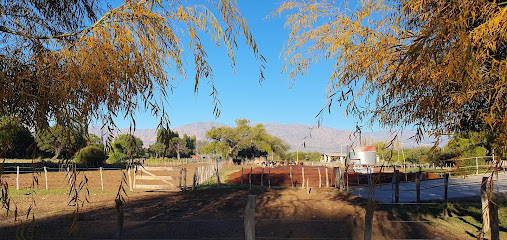
Los Colorados
Discover the breathtaking beauty of Los Colorados in Cafayate, where vibrant red rock formations create a stunning backdrop for outdoor adventures.
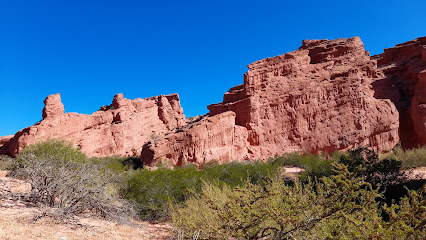
FINCA QUARA
Discover tranquility and breathtaking landscapes at FINCA QUARA, your perfect getaway in Cafayate's renowned wine country.
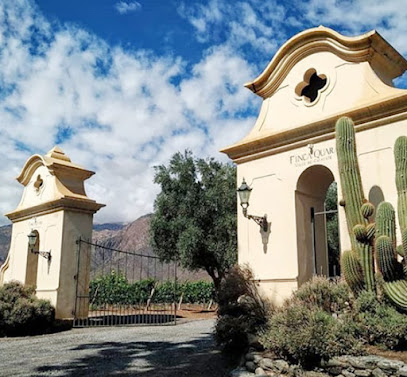
Finca Las Nubes
Discover the beauty and flavors of Finca Las Nubes, where exquisite wines meet breathtaking vineyard views in Cafayate, Argentina.

Shells' Ravine
Explore the breathtaking landscapes and diverse wildlife at Shells' Ravine, a must-visit nature preserve in Cafayate, Salta Province, Argentina.
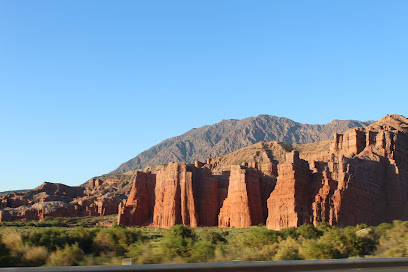
Grace Cafayate Hotel
Discover the luxury of Grace Cafayate Hotel, nestled in the breathtaking landscapes of Cafayate, Argentina, where modern elegance meets rich cultural heritage.
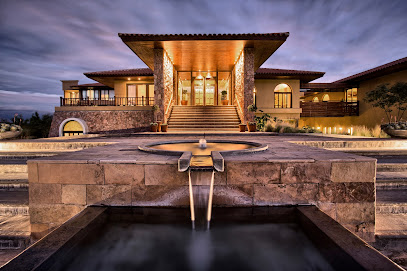
Bad Brothers Wine Experience
Experience the essence of Cafayate at Bad Brothers Wine Experience, where exquisite wines and local flavors come together in a charming setting.
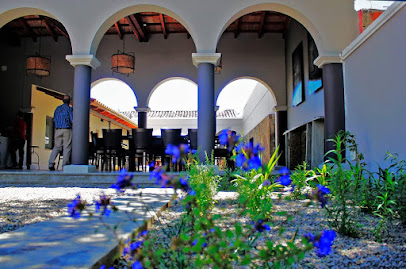
Cathedral of Our Lady of the Rosary
Discover the architectural beauty and serene atmosphere of the Cathedral of Our Lady of the Rosary in Cafayate, a cultural gem in Argentina's Salta Province.
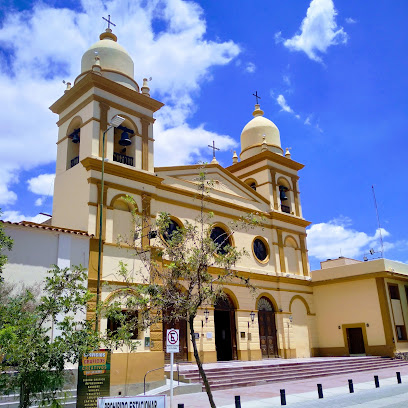
Los Médanos
Explore Los Médanos in Cafayate, Salta Province – a breathtaking hiking area featuring stunning sand dunes and vibrant landscapes, perfect for nature lovers and adventurers.
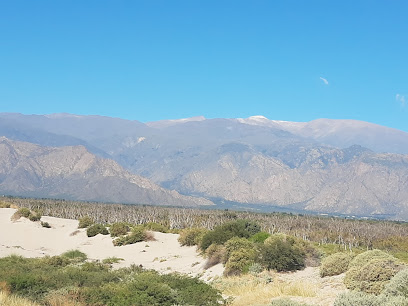
Wine Resort Vinas de Cafayate
Immerse yourself in the beauty of Cafayate at Viñas de Cafayate Wine Resort, where luxury meets the art of winemaking in stunning surroundings.
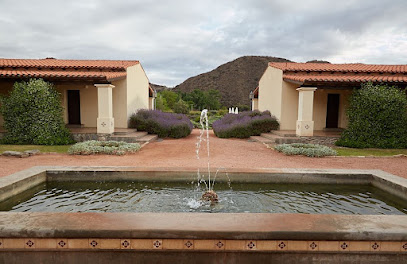
Unmissable attractions to see
Cafayate Square
Discover the vibrant heart of Cafayate at Cafayate Square, a picturesque park surrounded by lush greenery and rich cultural experiences.
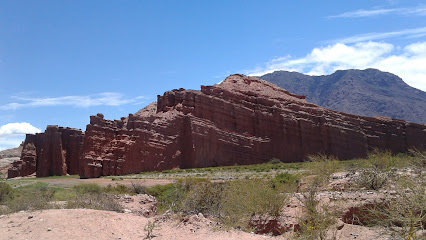
Piattelli Vineyards
Discover Piattelli Vineyards: a stunning winery in Cafayate offering exquisite wines, local cuisine, and breathtaking views of the Argentine landscape.
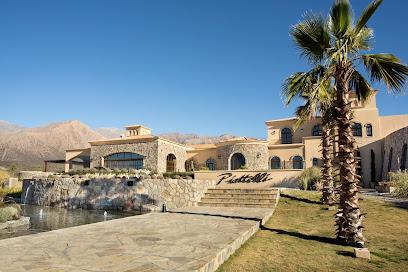
Piattelli Vineyards
Explore the beauty and flavors of Piattelli Vineyards in Cafayate, where exquisite wines and gourmet dining await amidst stunning landscapes.

Bodega Vasija Secreta
Explore the exquisite flavors of Argentine wines and local cuisine at Bodega Vasija Secreta, a must-visit winery in the beautiful Cafayate region.
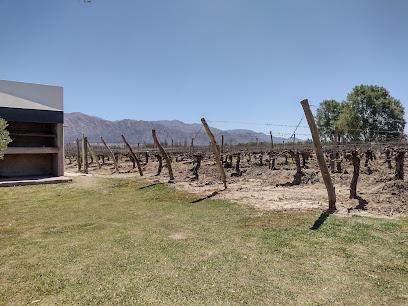
Los Colorados
Explore the enchanting landscapes of Los Colorados in Cafayate, Salta Province, where vibrant red rocks meet breathtaking scenery.
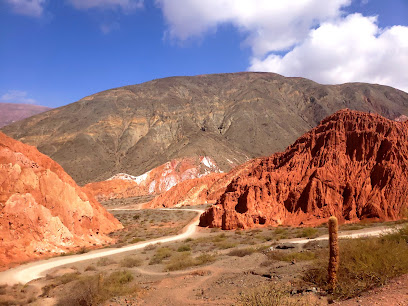
Bodega Vasija Secreta
Experience the rich flavors of Argentinian wines and traditional cuisine at Bodega Vasija Secreta in the stunning Cafayate region.
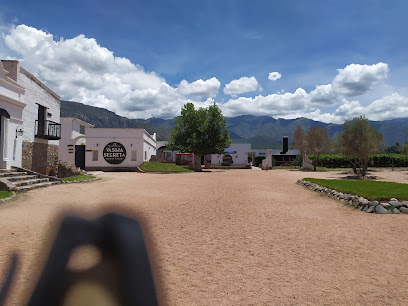
Patios de Cafayate
Experience the charm of Patios de Cafayate, a tranquil retreat in the heart of Salta's breathtaking landscapes and renowned wine country.

Los Médanos
Explore the breathtaking sand dunes and hiking trails of Los Médanos in Cafayate, Salta Province, a must-visit destination for nature enthusiasts.
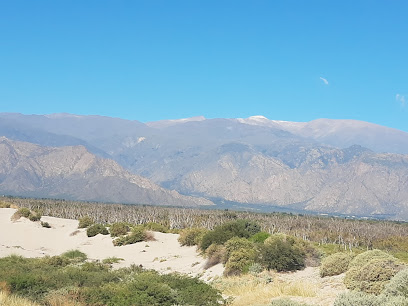
Bodega Nanni
Explore Bodega Nanni in Salta, Argentina, where stunning vineyards meet exquisite organic wines in a breathtaking setting.
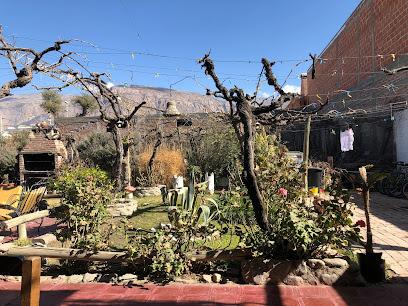
Familia Cafayate Park
Experience the natural beauty and tranquility of Familia Cafayate Park in the heart of Cafayate, Salta Province.
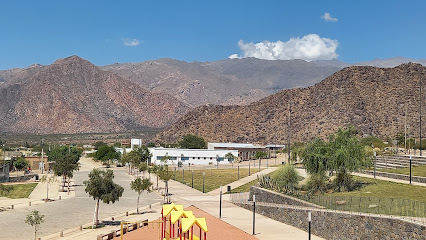
Las Ventanas
Discover the breathtaking beauty of Las Ventanas in Cafayate, a natural wonder and wine lover's paradise in Argentina's Salta Province.
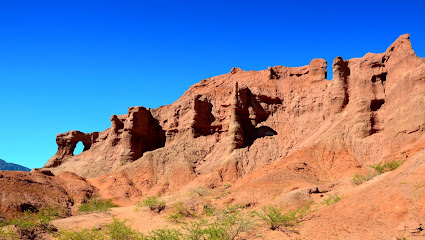
Michel Torino Plaza
Explore the beauty of Michel Torino Plaza, a peaceful park in Cafayate, perfect for relaxation, picnics, and cultural experiences amidst stunning landscapes.
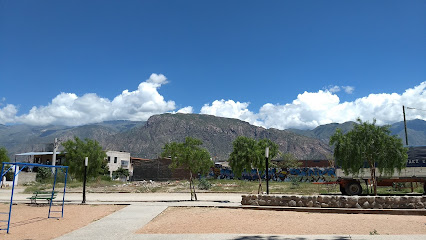
Yesera
Explore the stunning landscapes and rich wine culture of Yesera, a must-see tourist attraction in Cafayate, Salta Province, Argentina.
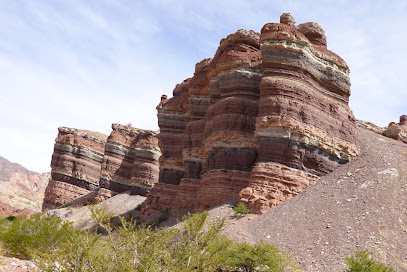
Plaza Gral. Martín Güemes
Experience the natural beauty and cultural vibrancy of Plaza Gral. Martín Güemes, a serene park in the heart of Cafayate, Argentina.
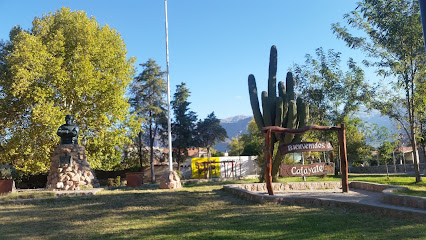
Archaeological Museum Rodolfo I Bravo
Uncover the rich cultural heritage of Salta Province at the Archaeological Museum Rodolfo I Bravo, a must-visit for history enthusiasts and curious travelers.
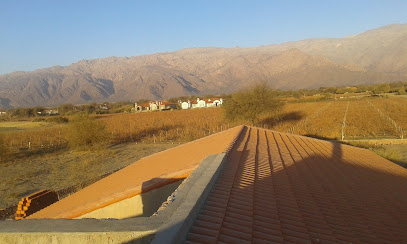
Essential places to dine
El Hornito
Discover El Hornito in Cafayate: Enjoy authentic Argentine cuisine at affordable prices in a warm and inviting atmosphere.
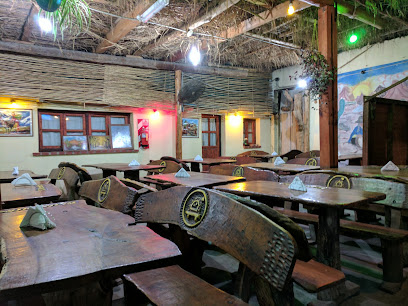
La Carreta de Don Olegario
Experience authentic Argentinian cuisine at La Carreta de Don Olegario in Cafayate, where every dish tells a story.
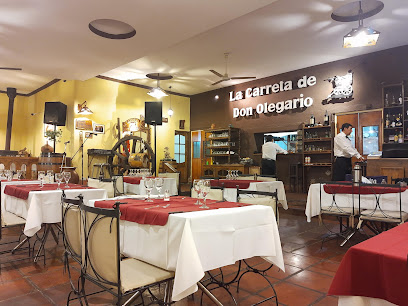
Como en Casa
Discover Como en Casa: where authentic Italian cuisine meets the stunning landscapes of Cafayate, Argentina.
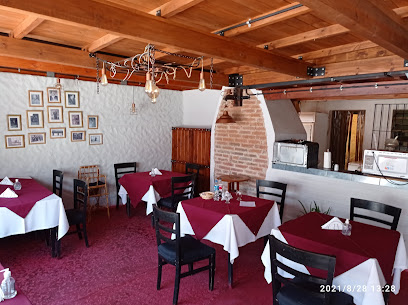
La Casa de las Empanadas
Experience the best empanadas and authentic Argentinian cuisine at La Casa de las Empanadas in Cafayate.
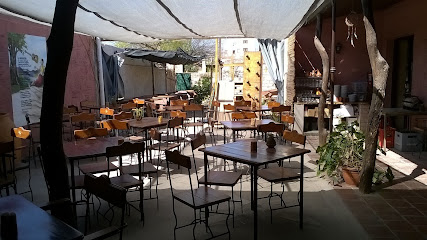
El Criollo
Experience authentic Argentine cuisine at El Criollo in Cafayate - where local flavors meet warm hospitality.

El Rancho
Discover authentic Argentinian cuisine at El Rancho in Cafayate – where every meal tells a story.
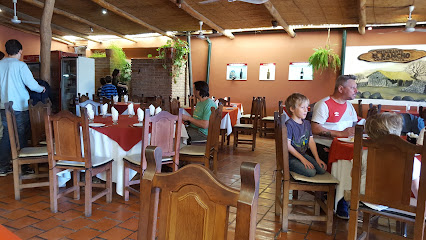
Baco Resto Bar
Discover Baco Resto Bar in Cafayate: Where Grilled Delights Meet Artisan Pizzas Amidst Stunning Vineyards.
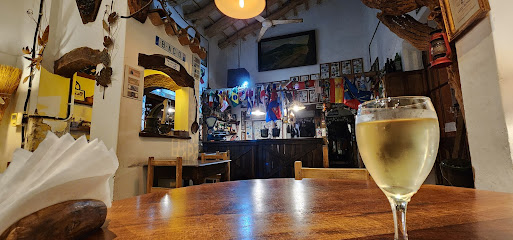
El Zorrito
Discover authentic Argentine cuisine at El Zorrito in Cafayate – where local flavors meet warm hospitality in a charming setting.
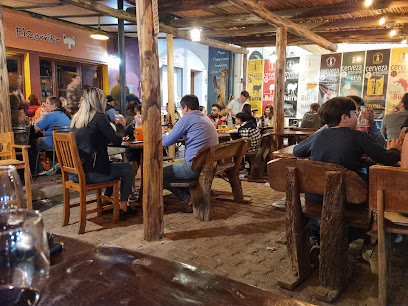
PEÑA Y PARRILLA DE LA PLAZA
Experience authentic Argentinian barbecue at Peña y Parrilla de la Plaza in Cafayate - where flavor meets tradition in every bite.
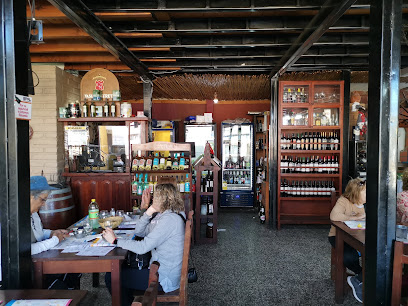
Doña Argentina Espacio Cultural
Experience authentic Argentine cuisine in a vibrant cultural setting at Doña Argentina Espacio Cultural in Cafayate.

Don Francesco Resto Bar
Experience the vibrant flavors of Cafayate at Don Francesco Resto Bar, where local cuisine meets international flair in a cozy gastropub setting.
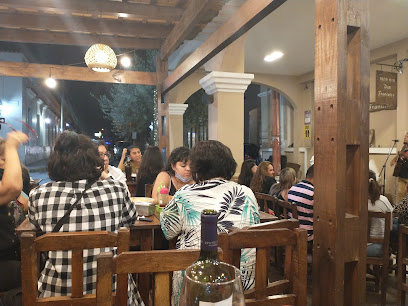
Pacha cocina Cafayate
Experience authentic Argentine cuisine at Pacha Cocina Cafayate - where local flavors meet exceptional dining.
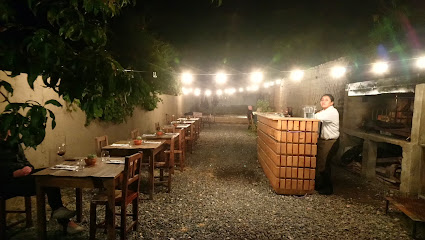
Restaurante Macacha
Discover authentic Argentinian cuisine at Restaurante Macacha in Cafayate - where every meal tells a story.
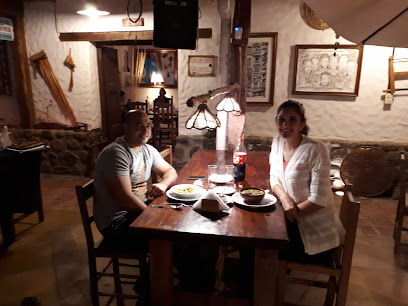
AMPI
Discover AMPI in Cafayate: A delightful blend of gourmet cheeses, tapas, and fine wines in a cozy atmosphere.
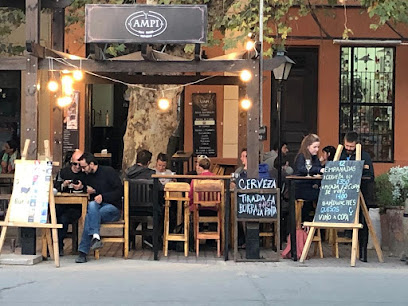
Pusk`no Bistro
Discover the flavors of Argentina at Pusk`no Bistro in Cafayate – where local ingredients meet culinary artistry.
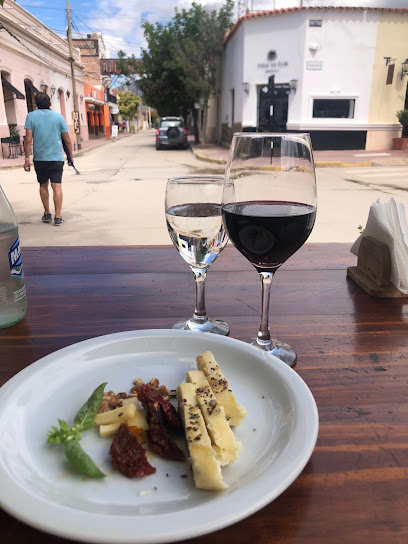
Markets, malls and hidden boutiques
Cafayate Goats S.A.
Discover the exquisite flavors of artisanal goat cheese at Cafayate Goats S.A., the heart of dairy craftsmanship in Cafayate, Argentina.
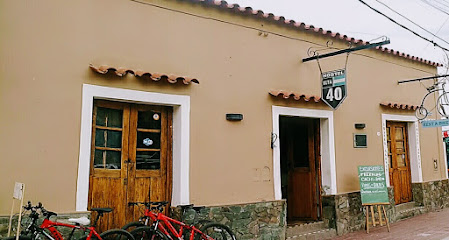
Bodega Vasija Secreta
Explore Bodega Vasija Secreta in Cafayate, where exquisite wines meet Argentinian culinary traditions amidst stunning landscapes.

Bodega Nanni
Experience the beauty of Argentine winemaking at Bodega Nanni, a premier winery in Salta offering exquisite wines and breathtaking vineyard views.
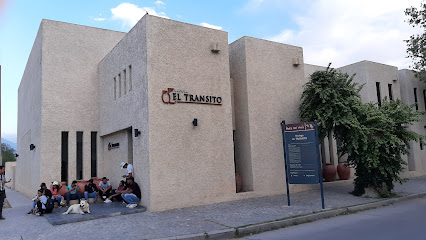
Flor del Valle (Bakery)
Discover the sweet taste of Cafayate at Flor del Valle Bakery, where artisan pastries and local flavors create a memorable culinary experience.
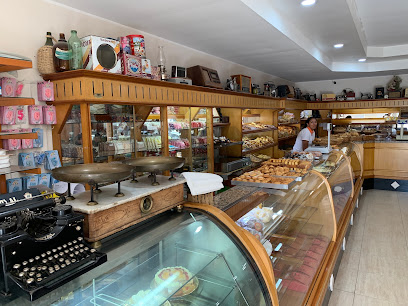
Feria Artesanal Cafayate
Explore unique handcrafted treasures and immerse yourself in the vibrant culture at Feria Artesanal Cafayate, a true artisan's paradise.
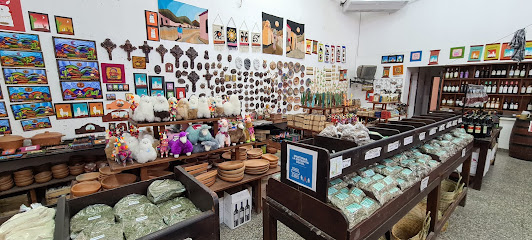
Bodega Domingo Hermanos
Experience the essence of Argentine winemaking at Bodega Domingo Hermanos in Cafayate, where tradition meets exquisite flavors in stunning vineyard settings.
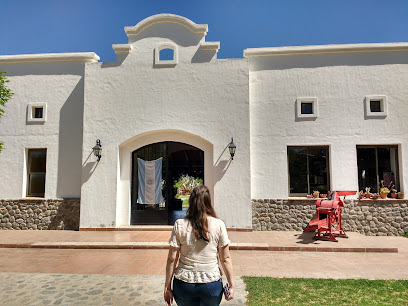
Calchaquitos
Discover the authentic taste of Argentina at Calchaquitos, the premier destination for alfajores in Cafayate, Salta Province.
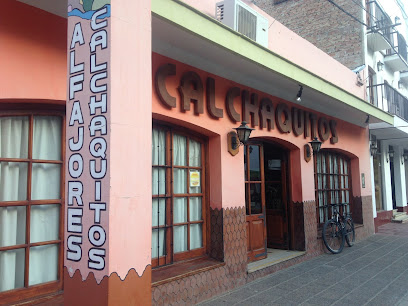
Mercado Municipal
Discover the Mercado Municipal in Cafayate, a vibrant market filled with local produce, exquisite wines, and authentic crafts that capture the essence of Salta Province.
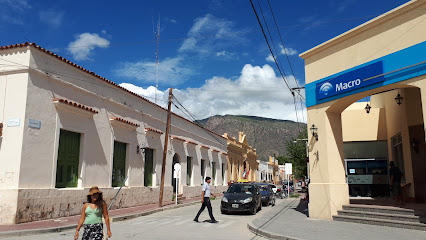
Bodega El Transito
Experience the beauty and flavor of Cafayate at Bodega El Transito, where exquisite wines and stunning vineyards await.
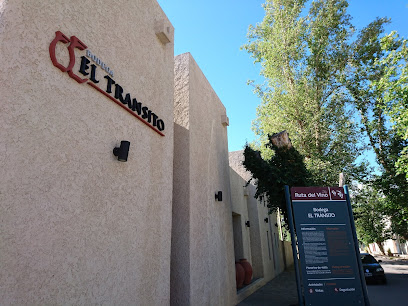
CAFAYATE MAYORISTA
Discover the vibrant flavors of Cafayate at Cafayate Mayorista, your one-stop supermarket for local produce, wines, and gourmet delicacies.
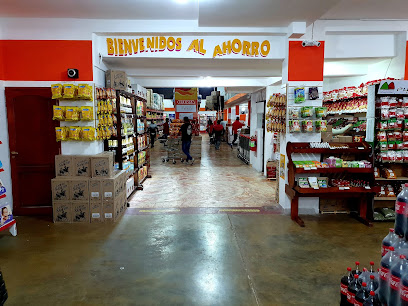
Cafayate Artesanal - Asociación de Artesanos Independientes
Explore Cafayate Artesanal, where exquisite craftsmanship and local flavors come together in a vibrant artisan market.

Paseo del Artesano
Explore the vibrant Paseo del Artesano, a shopping haven in Cafayate showcasing local crafts, cuisine, and cultural experiences.
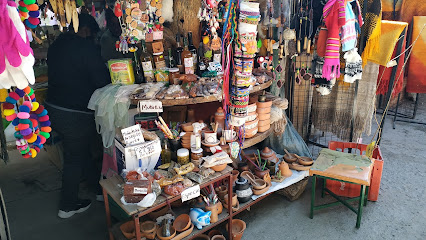
Oxigeno Deportes
Discover the ultimate outdoor adventure gear at Oxigeno Deportes, your go-to sporting goods store in Cafayate, Salta.
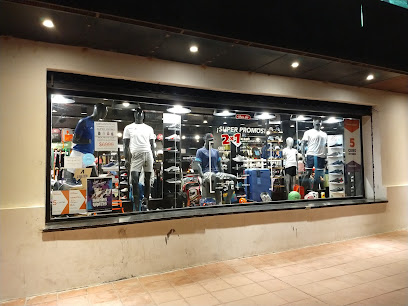
La Última Pulpería
Discover the rich culinary heritage of Cafayate at La Última Pulpería, where local flavors and artisanal products come together in a delightful grocery experience.

Mini Mercadito ALNI
Explore Mini Mercadito ALNI in Cafayate for a taste of local culture and artisan crafts, showcasing the heart of Salta Province's heritage.
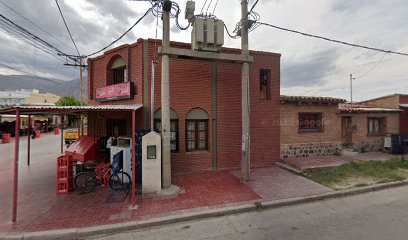
Essential bars & hidden hideouts
Bad Brothers Wine Experience
Discover the essence of Cafayate through exquisite wines and a warm, inviting atmosphere at Bad Brothers Wine Experience in Argentina.
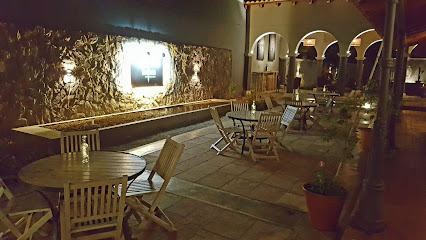
AMPI
Discover AMPI in Cafayate - where local flavors meet exceptional wines in a charming dining atmosphere.
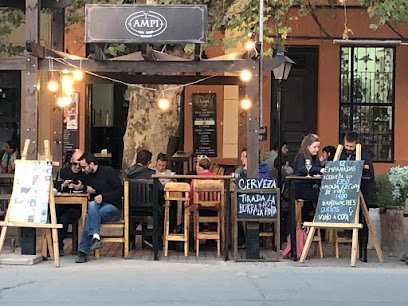
Bierhaus Cafayate
Discover the art of brewing in Cafayate at Bierhaus, where craft beers meet local flavors in a vibrant setting.
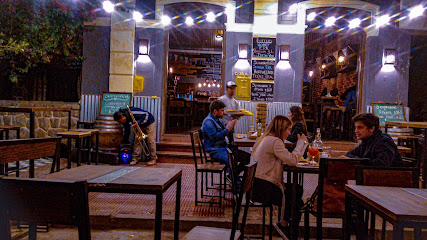
PÁRAMO CAFAYATE
Experience the vibrant nightlife of Cafayate at Páramo Cafayate, where local wines and lively ambiance meet.

Chaile Lounge & Bar
Discover the vibrant flavors of Cafayate at Chaile Lounge & Bar, a perfect blend of local wines, cocktails, and a cozy atmosphere.
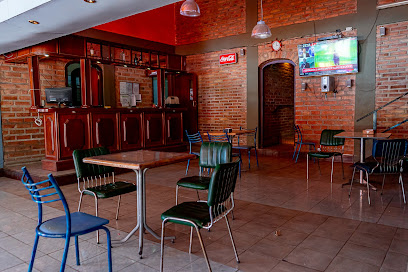
Gioconda Resto Bar
Discover Gioconda Resto Bar in Cafayate – a lively bar with local charm, diverse drinks, and vibrant nightlife in the heart of Salta Province.
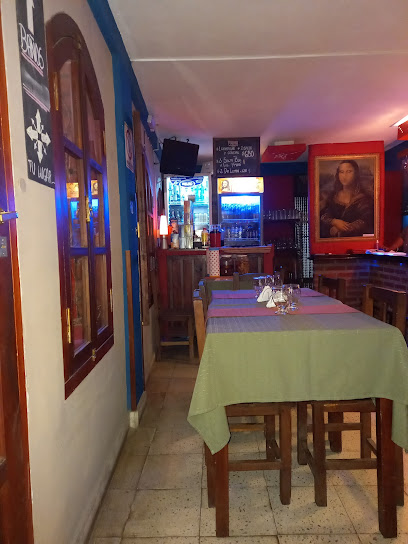
Vino Tinto Vinoteca (Wine Shop)
Experience the exquisite flavors of Cafayate's finest wines at Vino Tinto Vinoteca, a charming wine bar in Argentina's renowned wine region.
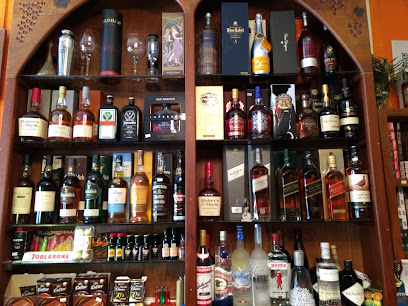
KNB Bar Cafayate
Discover the vibrant atmosphere of KNB Bar Cafayate, a must-visit gastropub serving local flavors and exceptional wines in Cafayate.
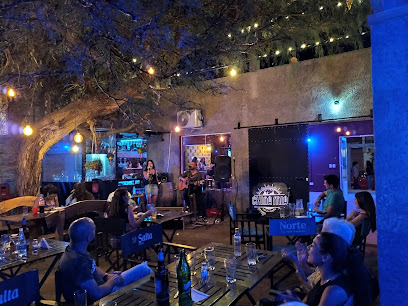
Bodega De Cervezas
Discover the flavors of Cafayate at Bodega De Cervezas, where local grill specialties meet a vibrant dining atmosphere.
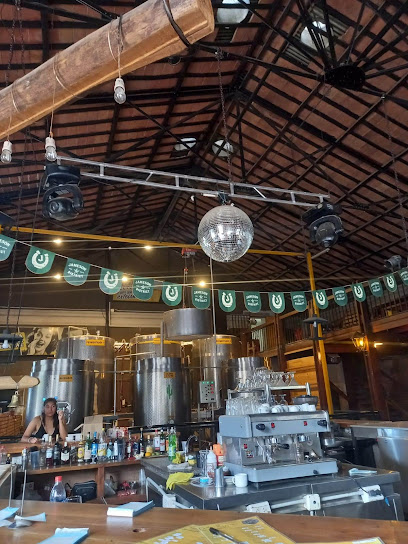
Chato's Wine Bar
Discover the heart of Cafayate's wine culture at Chato's Wine Bar, where every sip tells a story of Argentina's finest vineyards.
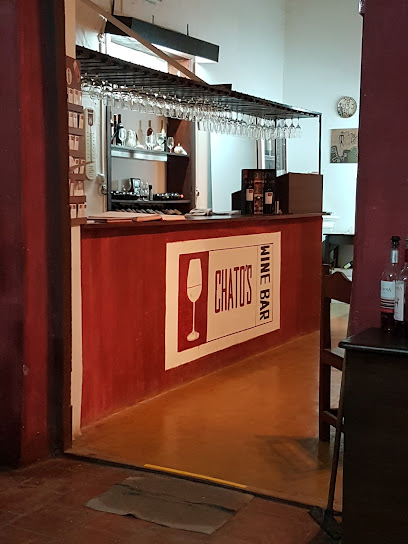
Wine Bar Cafayate
Explore exceptional local wines and exquisite dining at Wine Bar Cafayate, the heart of Cafayate's culinary scene.
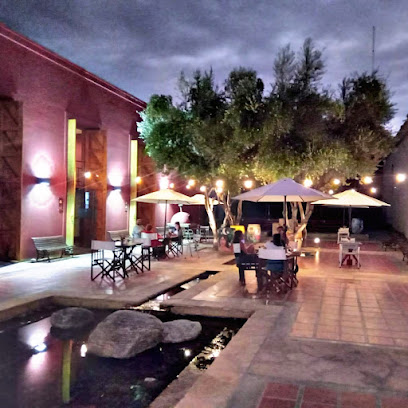
Don Bebidas
Discover the exquisite wines of Cafayate at Don Bebidas, where local flavors and a cozy atmosphere come together in a unique wine bar experience.
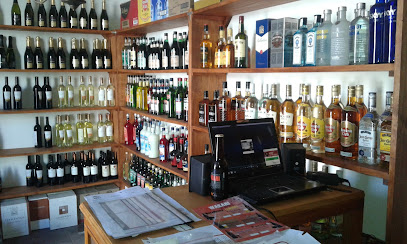
Cafayate Pablo Sambrano
Discover the heart of Cafayate at Pablo Sambrano, a lively bar with exquisite local wines and a welcoming ambiance perfect for tourists.
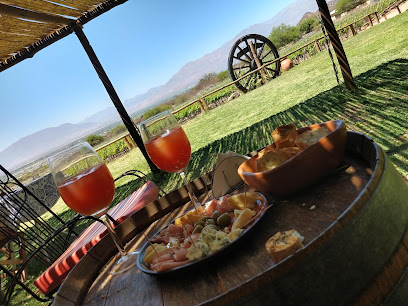
DON ARNALDO resto bar
Discover the vibrant nightlife and local flavors at DON ARNALDO Resto Bar in Cafayate, a must-visit for every traveler seeking authentic Argentine experiences.
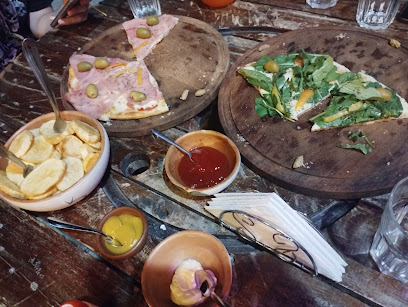
Stragos Resto Bar
Discover the lively spirit of Stragos Resto Bar in Cafayate, where local culture meets vibrant nightlife and exquisite drinks.
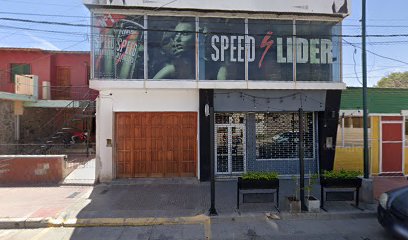
Local Phrases about Cafayate
-
- HelloHola
[oh-lah] - GoodbyeAdiós
[ah-dee-ohs] - YesSí
[see] - NoNo
[noh] - Please/You're welcomePor favor/De nada
[por fah-vor/deh nah-dah] - Thank youGracias
[grah-see-ahs] - Excuse me/SorryDisculpe/Perdón
[dees-kool-peh/pehr-dohn] - How are you?¿Cómo estás?
[koh-moh ehs-tahs] - Fine. And you?Bien. ¿Y tú?
[byen. ee too] - Do you speak English?¿Hablas inglés?
[ah-blahs een-glays] - I don't understandNo entiendo
[noh ehn-tyen-doh]
- HelloHola
-
- I'd like to see the menu, pleaseMe gustaría ver el menú, por favor
[meh goos-tah-ree-ah behr ehl meh-noo, por fah-vor] - I don't eat meatNo como carne
[noh koh-moh kahr-neh] - Cheers!¡Salud!
[sah-loohd] - I would like to pay, pleaseQuisiera pagar, por favor
[kee-see-eh-rah pah-gahr, por fah-vor]
- I'd like to see the menu, pleaseMe gustaría ver el menú, por favor
-
- Help!¡Ayuda!
[ah-yoo-dah] - Go away!¡Vete!
[veh-teh] - Call the Police!¡Llama a la Policía!
[yah-mah ah lah poh-lee-see-ah] - Call a doctor!¡Llama a un médico!
[yah-mah ah oon meh-dee-koh] - I'm lostEstoy perdido
[ehs-toy pehr-dee-doh] - I'm illEstoy enfermo
[ehs-toy ehn-fehr-moh]
- Help!¡Ayuda!
-
- I'd like to buy...Me gustaría comprar...
[meh goos-tah-ree-ah kohm-prahr...] - I'm just lookingSolo estoy mirando
[soh-loh ehs-toy mee-rahn-doh] - How much is it?¿Cuánto cuesta?
[kwan-toh kwehs-tah] - That's too expensiveEso es demasiado caro
[eh-soh ehs deh-mah-see-ah-doh kahr-oh] - Can you lower the price?¿Puede bajar el precio?
[pweh-deh bah-hahr ehl pree-syoh]
- I'd like to buy...Me gustaría comprar...
-
- What time is it?¿Qué hora es?
[keh oh-rah ehs] - It's one o'clockEs la una
[ehs lah oo-nah] - Half past (10)Media (10)
[meh-dee-ah (deez)] - MorningMañana
[mah-nyah-nah] - AfternoonTarde
[tahr-deh] - EveningNoche
[noh-cheh] - YesterdayAyer
[ah-yehr] - TodayHoy
[oy] - TomorrowMañana
[mah-nyah-nah] - 1Uno
[oo-noh] - 2Dos
[dohs] - 3Tres
[trehs] - 4Cuatro
[kwah-troh] - 5Cinco
[seen-koh] - 6Seis
[says] - 7Siete
[syeh-teh] - 8Ocho
[oh-choh] - 9Nueve
[nweh-veh] - 10Diez
[dyehs]
- What time is it?¿Qué hora es?
-
- Where's a/the...?¿Dónde está...?
[dohn-deh ehs-tah] - What's the address?¿Cuál es la dirección?
[kwal ehs lah dee-rehk-syon] - Can you show me (on the map)?¿Puedes mostrarme (en el mapa)?
[pweh-dehs mohs-trahr-meh (ehn ehl mah-pah)] - When's the next (bus)?¿Cuándo es el próximo (autobús)?
[kwan-doh ehs ehl proh-ksee-moh (ow-toh-boos)] - A ticket (to ....)Un boleto (a ....)
[oon boh-leh-toh (ah)]
- Where's a/the...?¿Dónde está...?
History of Cafayate
-
Before the arrival of the Spanish, the area now known as Cafayate was inhabited by indigenous peoples, including the Diaguita-Calchaquí tribes. These tribes were known for their advanced agricultural practices and intricate pottery. They thrived in the fertile valley, utilizing the land for farming and trade.
-
In the 16th century, Spanish explorers arrived in the region, seeking to expand their territories. The Spanish conquest brought significant changes to the indigenous way of life. The local tribes faced pressure to convert to Christianity and adopt Spanish customs. The establishment of encomiendas and the introduction of European agriculture altered the social and economic landscape.
-
Cafayate was officially founded in 1840 by Manuel Fernando de Aramburú, a Spanish colonist. The town was strategically established in the Calchaquí Valleys, taking advantage of the fertile land and favorable climate for agriculture. The name 'Cafayate' is believed to derive from the Quechua word 'Capac Yac,' meaning 'Great Chief' or 'Wealthy Town.'
-
The introduction of viticulture to Cafayate in the 19th century marked a turning point in the town's history. The unique terroir, characterized by high altitude, dry climate, and sandy soil, proved ideal for growing grapes. Today, Cafayate is renowned for its high-quality wines, particularly Torrontés, a white grape variety that thrives in the region.
-
Cafayate's cultural heritage is a blend of indigenous traditions and Spanish colonial influences. The town is known for its vibrant folk music, traditional dances, and artisan crafts. Annual festivals, such as the Serenata a Cafayate, celebrate the region's rich cultural history through music, dance, and local cuisine.
-
In recent decades, Cafayate has experienced significant development, becoming a popular tourist destination. The town's infrastructure has improved, with better roads, accommodations, and amenities. Despite modernization, Cafayate has managed to preserve its historical charm and cultural identity, attracting visitors from around the world.
Cafayate Essentials
-
Cafayate is located in the Salta Province of northwest Argentina. The nearest major airport is Martín Miguel de Güemes International Airport in Salta, approximately 190 kilometers away. From Salta, you can rent a car, take a bus, or hire a taxi to Cafayate. The road trip through the scenic Calchaquí Valleys typically takes around 3 to 4 hours.
-
Cafayate is a relatively small town, and many of its attractions are within walking distance. For longer trips, local taxis are available and reasonably priced. There are also buses that connect Cafayate with nearby towns and villages. Renting a car is a popular option for those who wish to explore the surrounding areas and vineyards at their own pace.
-
The official currency in Argentina is the Argentine Peso (ARS). While credit cards are accepted in many hotels, restaurants, and shops, it's advisable to carry cash, especially when visiting smaller establishments and rural areas. There are ATMs available in Cafayate, but it's wise to withdraw sufficient cash before traveling to ensure you have enough funds.
-
Cafayate is generally considered a safe destination for tourists. However, standard precautions should be taken. Avoid walking alone at night in unfamiliar areas and keep an eye on your belongings in crowded places. There are no specific high-crime areas targeting tourists, but it's always best to stay vigilant and aware of your surroundings.
-
In case of emergency, dial 911 for immediate assistance. There is a local police station and medical facilities available in Cafayate. It's recommended to have travel insurance that covers medical emergencies. For minor health issues, there are pharmacies in town where you can purchase over-the-counter medications.
-
Fashion: Do wear comfortable clothing suitable for warm weather, but avoid overly revealing outfits. Religion: Do respect local customs and traditions, especially when visiting churches and religious sites. Public Transport: Do be respectful and give up your seat to elderly passengers. Don’t eat or drink on public transport. Greetings: Do greet people with a friendly 'Hola' and a handshake. Eating & Drinking: Do try the local wines and empanadas. Don’t refuse food or drink offerings, as it’s considered impolite.
-
To experience Cafayate like a local, visit the local markets where you can buy fresh produce and handicrafts. Engage with locals, as they are often friendly and willing to share information about the town's history and culture. Don’t miss visiting the local vineyards for wine tastings, as Cafayate is renowned for its Torrontés wine. For a unique experience, attend a traditional folk music event or a festival if your visit coincides with one.
Trending Landmarks in Cafayate
-
Garganta del Diablo
-
Cafayate Square
-
Piattelli Vineyards
-
Patios de Cafayate
-
La Casa de las Empanadas
-
Cafayate Goats S.A.
-
Los Colorados
-
FINCA QUARA
-
Finca Las Nubes
-
Shells' Ravine
-
Grace Cafayate Hotel
-
Bad Brothers Wine Experience
-
Cathedral of Our Lady of the Rosary
-
Los Médanos
-
Wine Resort Vinas de Cafayate
Nearby Cities to Cafayate
-
Things To Do in Salta
-
Things To Do in San Pedro de Atacama
-
Things To Do in Antofagasta
-
Things To Do in Tarija
-
Things To Do in Córdoba
-
Things To Do in Uyuni
-
Things To Do in San Juan
-
Things To Do in La Serena
-
Things To Do in Coquimbo
-
Things To Do in Potosi
-
Things To Do in Iquique
-
Things To Do in Sucre
-
Things To Do in Mendoza
-
Things To Do in Asuncion
-
Things To Do in Aregua












